Quadratic Graphs (Cambridge (CIE) O Level Additional Maths): Revision Note
Exam code: 4037
Quadratic graphs
A quadratic is a function of the form where
is not zero They are a very common type of function in mathematics, so it is important to know their key features
What does a quadratic graph look like?
The shape made by a quadratic graph is known as a parabola
The parabola shape of a quadratic graph can either look like a “∪-shape” or a “∩-shape”
A quadratic with a positive coefficient of
will be a ∪-shape
A quadratic with a negative coefficient of
will be a ∩-shape
A quadratic will always cross the
-axis
A quadratic may cross the
-axis twice, once, or not at all
The points where the graph crosses the
-axis are called the roots
If the quadratic is a ∪-shape, it has a minimum point (the bottom of the ∪)
If the quadratic is a ∩-shape, it has a maximum point (the top of the ∩)
Minimum and maximum points are both examples of turning points
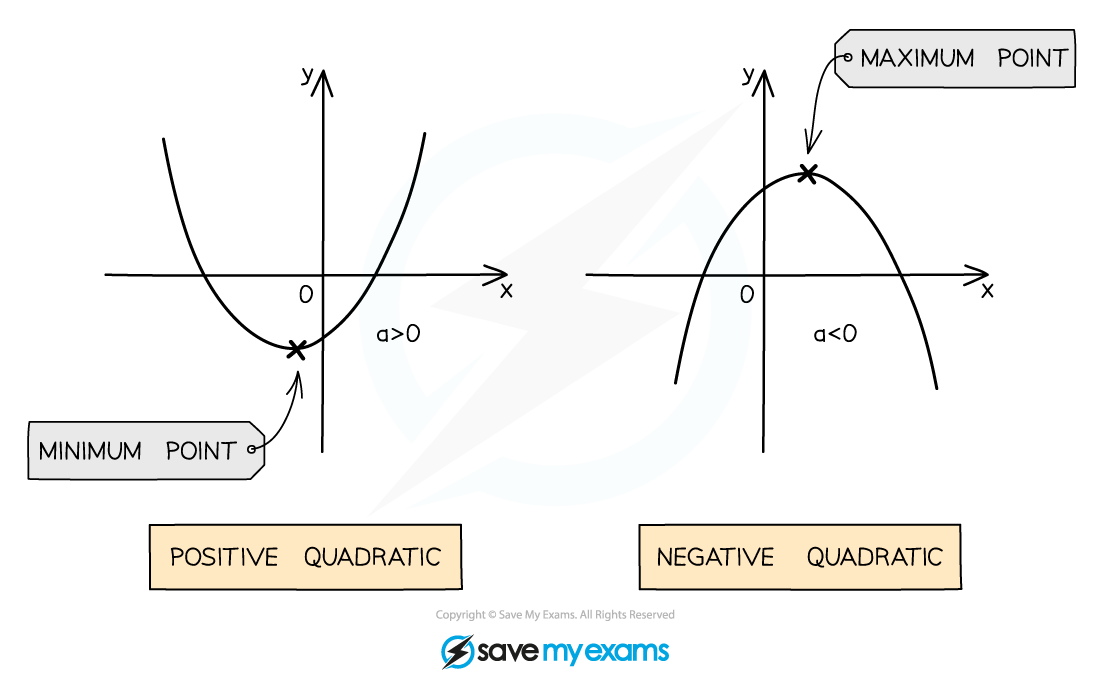
How do I sketch a quadratic graph?
We could create a table of values for the function and then plot it accurately
However we often only require a sketch to be drawn, showing just the key features
The key features needed to be able to sketch a quadratic graph are
the overall shape
∪-shape graphs occur when
(positive quadratic)
∩-shape graphs occur when
(negative quadratic)
the
-intercept(s), these are also known as the roots (there may be none!)
roots are found by setting the quadratic function (or
) equal to zero
i.e. solve
if there are no (real) solutions (i.e. no roots), the graph does not intersect the
-axis
the discriminant can be used to determine whether a quadratic function has 0, 1 or 2 roots
the
-intercept
this is found by setting
in the quadratic function
so for
the coordinates of the
-intercept will be
the minimum or maximum point (turning point)
sometimes a rough idea of where this should lie is enough
sometimes the specific coordinates of the turning point will be needed
when required the coordinates of the turning point can be found by either completing the square or differentiation
in cases where the quadratic has just one root, the graph will touch (rather than cross) the
-axis and so this will be the turning point
Worked Example
a) Sketch the graph of , labelling any intercepts with the coordinate axes.
It is a positive quadratic, so will be a -shape
The '' at the end is the
-intercept (
when
), so the graph crosses the
-axis at (0,6)
Factorise
Solve
So the roots of the graph are
(2,0) and (3,0)
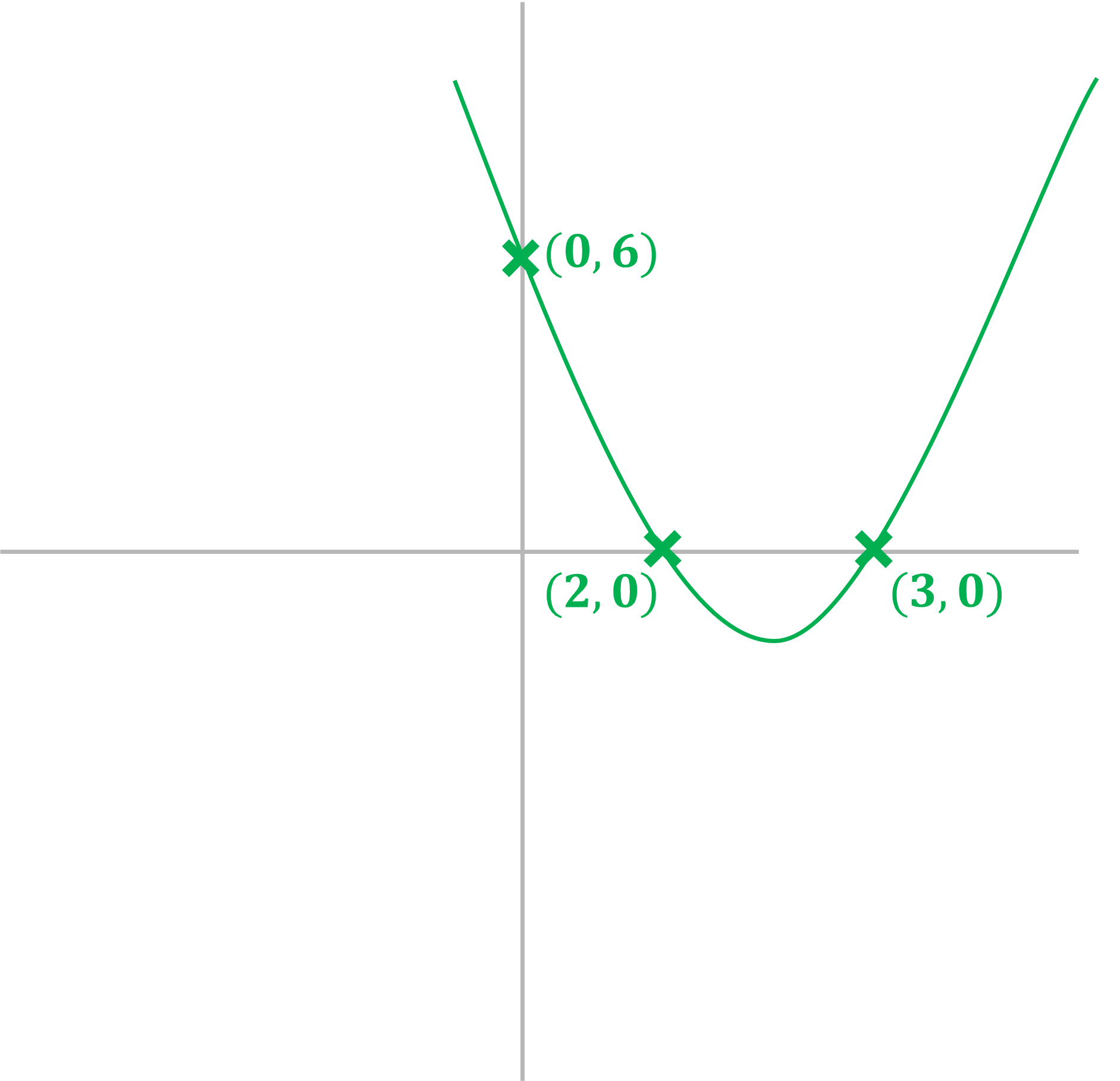
b) Sketch the graph of , labelling any intercepts with the coordinate axes.
It is a positive quadratic, so will be a -shape
The '' at the end is the
-intercept, so this graph crosses the y-axis at
(0,13)
The discriminant of the quadratic is ''
As the discriminant is negative, there are no (real) roots and the graph does not intersect the -axis
(Note we have included the coordinates of the turning point, to help you visualise the graph, but there was no requirement from the question to do this - on a sketch like this, the turning point should be in the correct quadrant)
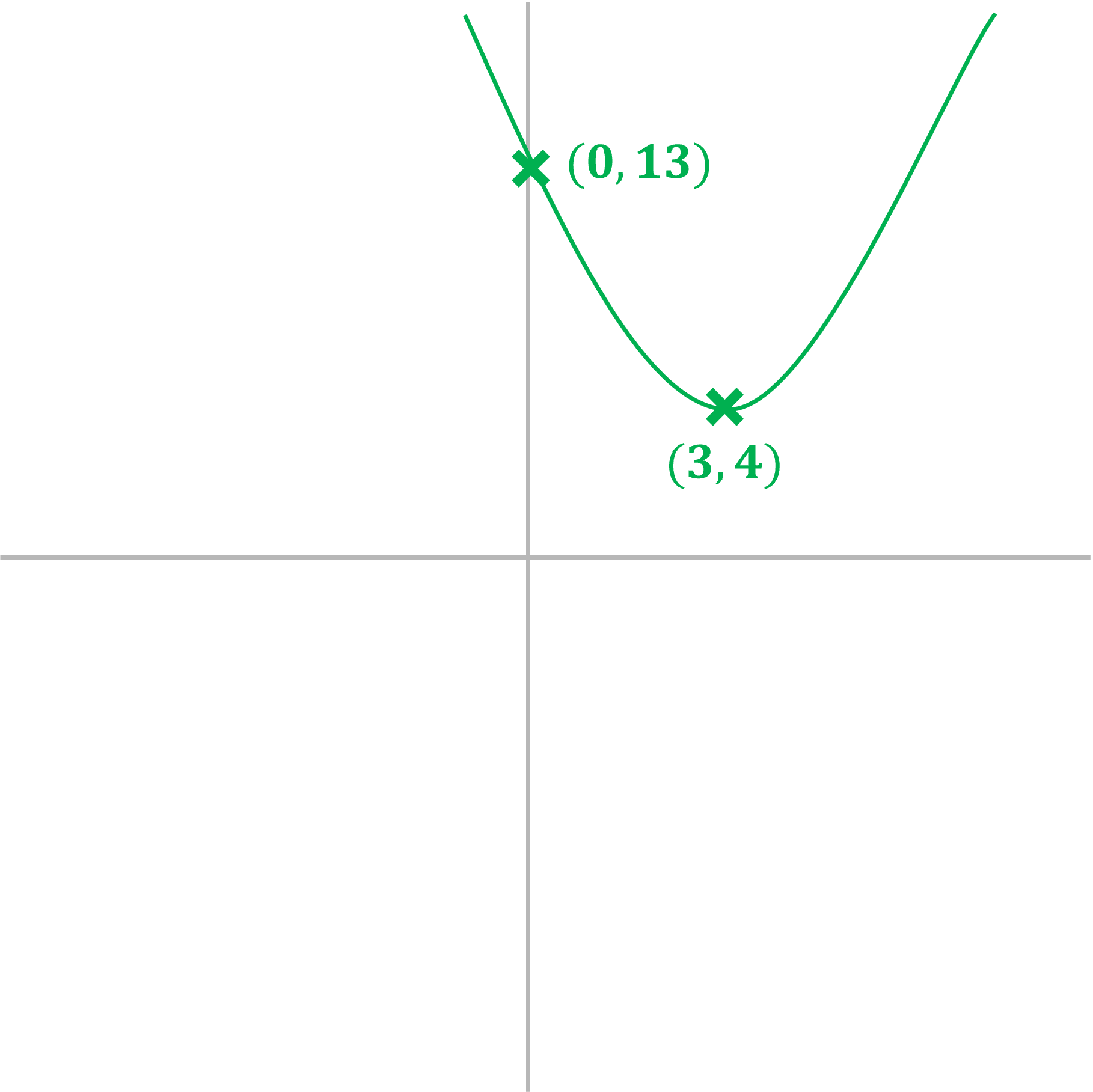
c) Sketch the graph of , labelling any intercepts with the coordinate axes and the turning point.
It is a negative quadratic, so will be an -shape
The '' at the end is the
-intercept, so this graph crosses the
-axis at (0, -4)
Factorising
This shows that there is only one root and the graph will touch the -axis at the point (-2, 0) This point will also be the turning point - and as this is a negative quadratic - will be a maximum point
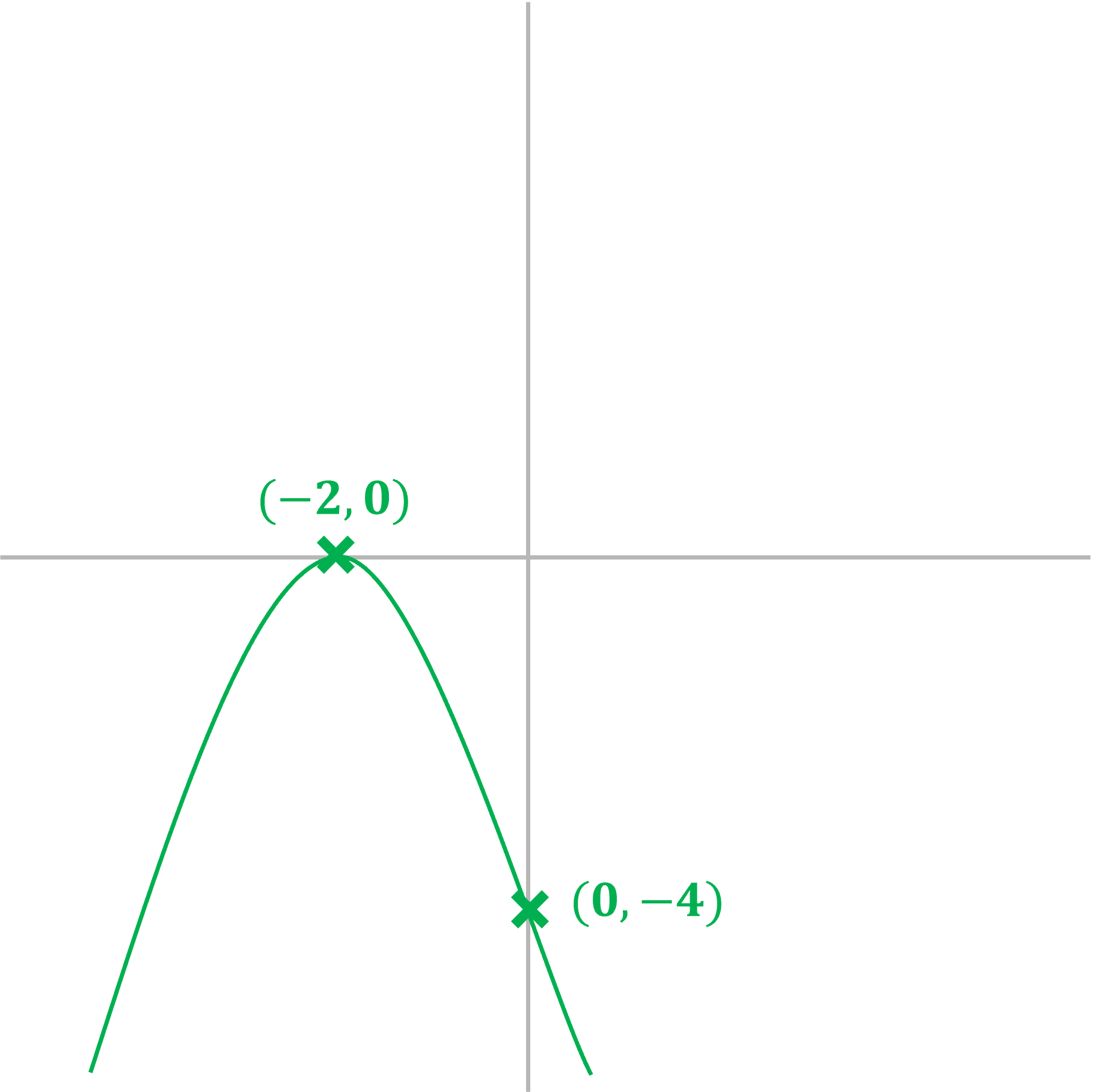
Sketching graphs by completing the square
How does completing the square help me sketch graphs?
Completing the square can quickly tell us the coordinates of the turning point on a quadratic graph
This is based on the fact that a squared term (e.g.
) cannot be negative
STEP 1
Complete the square - rewritein the form
STEP 2
Deduce the-coordinate of the turning point
for all values of
Therefore it's minimum value is 0, and this occurs when
The -coordinate is
STEP 3
Deduce the-coordinate of the turning point
Therefore
The -coordinate is
STEP 4
The turning point has coordinatesThis can be considered when sketching the graph of the quadratic function
Note that the turning point could be a maximum or minimum point - this will depend on the value of
is the coefficient of the
term
If
is positive, the graph is
- shaped and will have a minimum point
If
is negative, the graph is
- shaped and will have a maximum point

How do I use the graph of a quadratic function to find its range?
The range of a quadratic function will be shown on its graph by the values
takes
i.e. the turning point from a quadratic graph will determine its range
For the quadratic function
whose graph has a minimum point
the range of the
will be
For the quadratic function
whose graph has a maximum point
the range of
will be
If there any restrictions on the domain of
then they could affect the range of
Worked Example
Sketch the graph of where
, giving the coordinates of the turning point, and any points where the graph intercepts the coordinate axes. Use your graph to write down the range of
.
STEP 1 - Complete the square.
STEP 2 - Deduce the -coordinate.
STEP 3 - Deduce the -coordinate.
STEP 4 - Label the turning point when sketching the graph of the quadratic function.
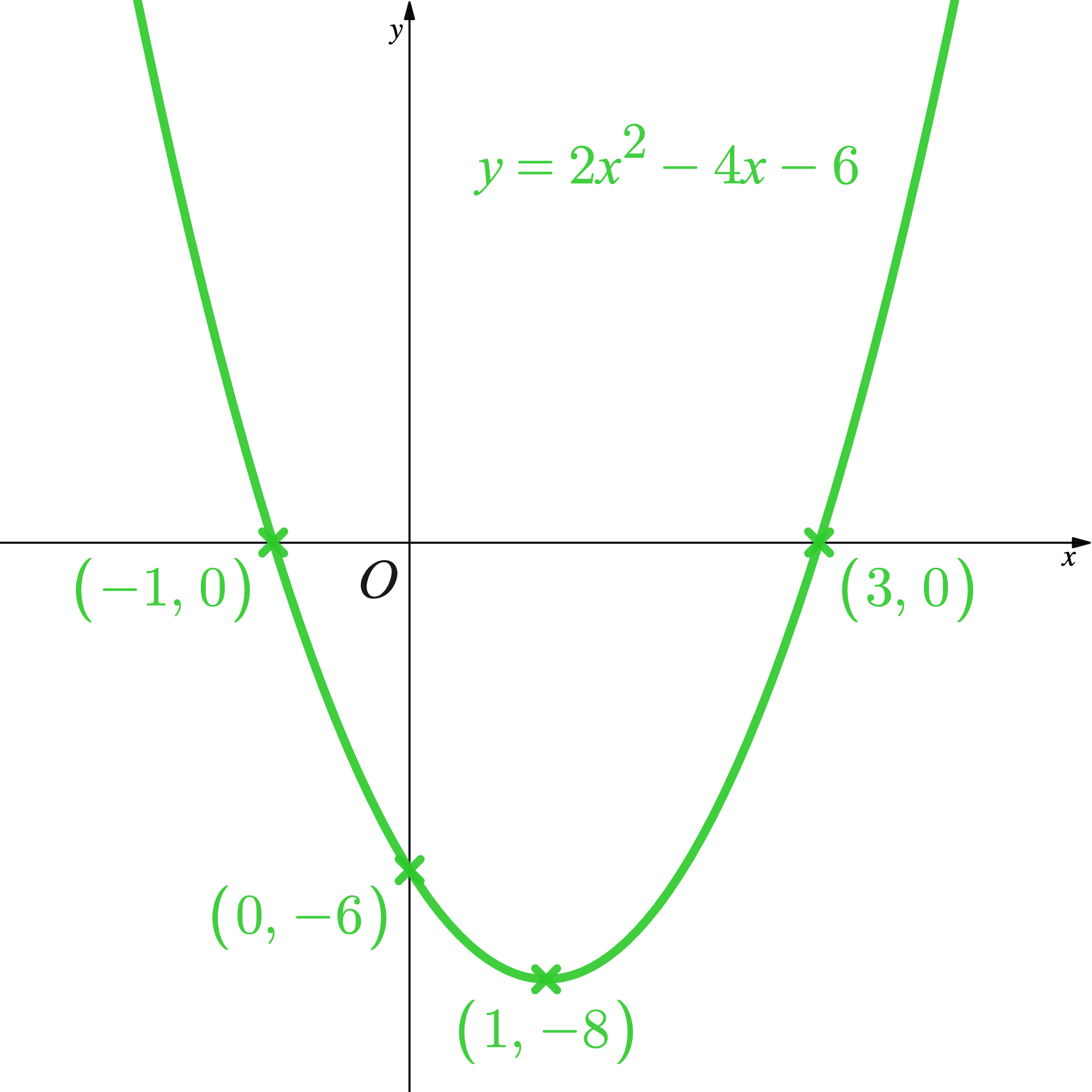
The graph has a minimum point so the range will be greater than or equal to the -coordinate of this point.
The range of is

Unlock more, it's free!
Did this page help you?